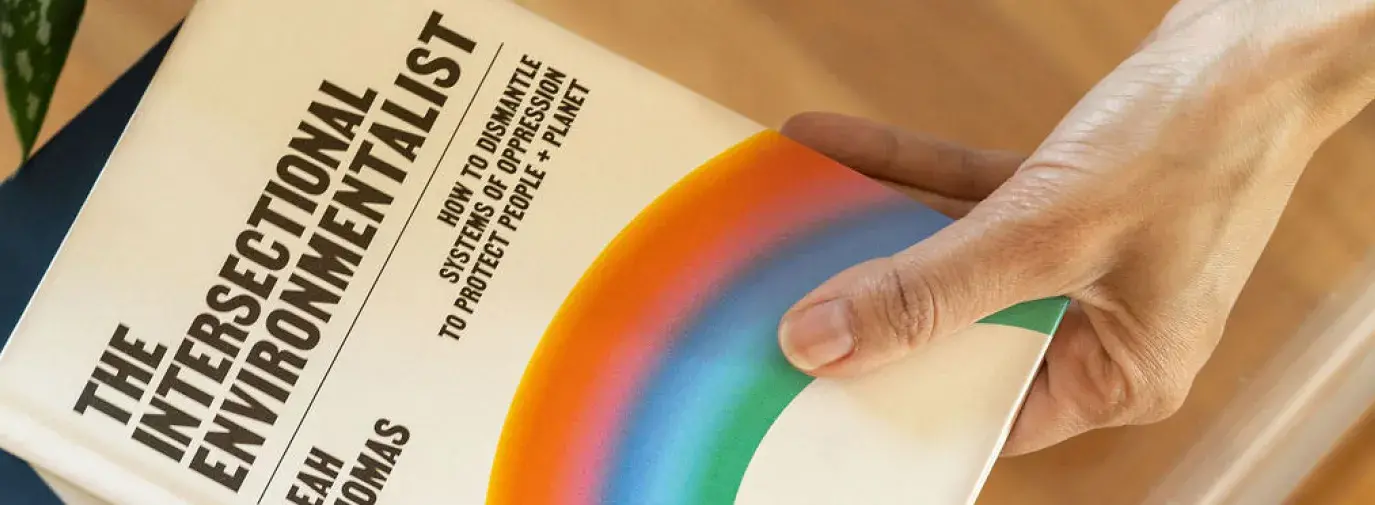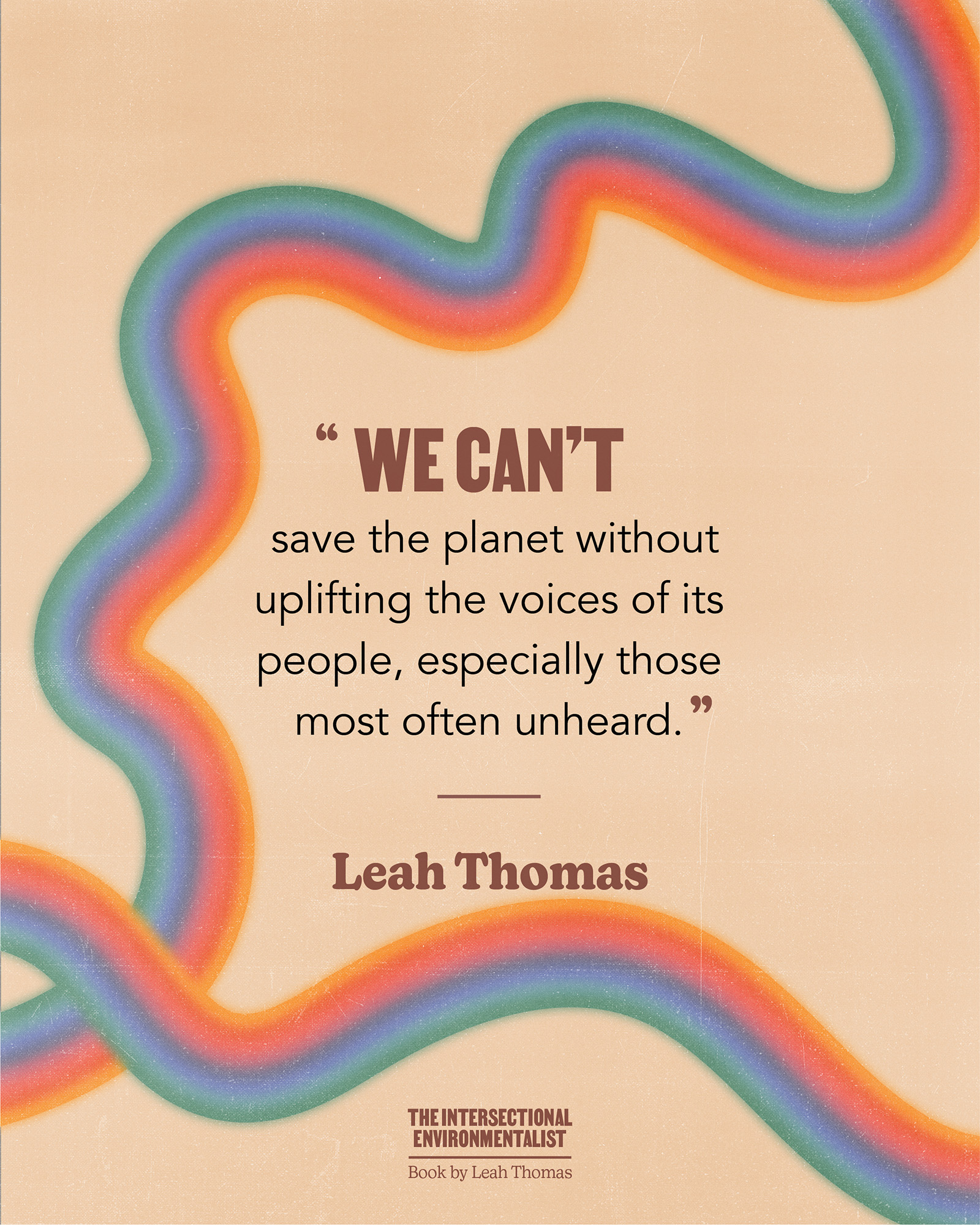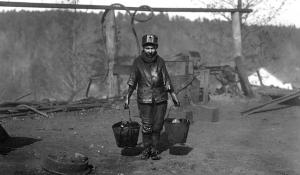
I once thought I had to choose between advocating for my Black identity and the planet,” author, activist, and founder of Intersectional Environmentalist Leah Thomas writes in her new book, The Intersectional Environmentalist: How to Dismantle Systems of Oppression to Protect People + Planet.
Leah Thomas makes a compelling case that we can only achieve environmental justice when we are activists for both communities of color and the environment.
What Is Intersectionality?
Civil Rights activist and scholar Kimberlé Crenshaw first coined the term “intersectionality” in a 1989 University of Chicago Legal Forum paper examining how ignoring the intersection of race and gender in Black women marginalizes their experiences.
This is the backbone of Thomas’ work and the environmental liberation movement—that is, widespread organizing and community building to achieve Black liberation, climate justice, and environmental justice, as defined by Ayana Albertini-Fleurant at Generation Green.
“Sometimes people may say, ‘It feels so overwhelming considering everything at once,’” Thomas explains. “Maybe it’s going to take more work to consider the economic impacts, the health impacts. But if you consider them, you can create solutions that address everything. I don’t think it’s a pipe dream.”
What you can do: Education is a form of activism, so the first step is learning the history from the Black, brown, and Indigenous voices at the forefront of this movement.

A Safe Planet Means Safe Workers
In 1968, more than 1,300 Black men from the Memphis Department of Public Works demanded higher wages and environmental safety measures during the Memphis sanitation strike. The Environmental Protection Agency considered this “the first time Black Americans mobilized… ‘to oppose what they considered environmental injustice.’”
This is only one piece of historical evidence highlighting intersectionality in Thomas’ book.
“Paying people poorly shows how a system values them,” she explains. “If you treat people better, I think you’re also going to treat the Earth better. A disregard for both people and planet leads to unsafe working conditions.”
Another example is the fashion industry, and the dangers of fast fashion: endangering and not paying garment factory workers, mostly women, to create clothing quickly and cheaply while working with toxic chemicals. Green America is working to address this injustice in our Toxic Textiles campaign. Read more about it in the winter 2019 Green American, “Unraveling the Fashion Industry”.
What you can do: Vote with your dollars. Learn where your money is going and prioritize your financial support for ethical employers, businesses owned by Black, Latinx, Asian, Indigenous, and other members of communities of color, and sustainable companies.
Recognize Climate Change is Already Fatal
Those who contribute the least to climate change—from the employees outlined above to unassuming residents—will be some of the hardest hit by its devastating consequences.
Thomas uses the example of Cancer Alley, a stretch of land along the Mississippi River in Louisiana that is home to 150 petrochemical plants and refineries—and higher rates of cancer compared to the national average.
For people living in majority Black and low-income areas of Cancer Alley, their cancer risk is over 10% higher than in majority-white areas.
This goes straight back to events like the Memphis sanitation strike and Thomas’ call for intersecting solutions. Multi-pronged solutions, like Green America’s Clean Energy Victory Bonds, which would provide safe, green jobs while supporting a just transition to clean energy, is how we need to address intersectional, environmental justice.
What you can do: Think and act locally. Seek out voices from community members who are not in majority groups, like people of color, disabled people, and LGBTQ+ neighbors about their realities of where you live. Volunteer locally, vote locally, and pay attention.
A Healthy Environment? That’s a Benefit of White Supremacy
In a country built on white supremacy, it is important to remember that racism endures as the most insidious intersection of all systems and social issues. Beyond Memphis and Cancer Alley, Thomas recalls environmental history to show this.
“If we take it back to the first Earth Day [April 22, 1970], it was a movement that wasn’t inclusive,” Thomas says. “With it, we saw a ‘Not in my backyard,’ type of approach to environmental policy.”
Thomas cited Arturo Sandoval, an organizer of the first Earth Day, who said, “After Earth Day, there was a succession of a lot of national federal legislation… enacted specifically to protect the environment.”
That success was primarily, sometimes exclusively, felt by more affluent and whiter communities. This outcome, Sandoval argues, led the largely white middle- and upper-class environmental groups to believe such success was enough and there was no need to reach out to marginalized groups. As Thomas further explains, some of the legislation following Earth Day “directly diverted toxic waste into Black, Brown, and low-income communities.”
“This is what happens when you don’t have intersectional advocacy,” Thomas explains. “It diverts the problem to other people, where it becomes out-of-sight, out-of-mind for those more privileged.”

Another historical example is from Warren County, North Carolina, where, in 1982, activists protested the placement of a hazardous waste landfill in the predominantly Black community.
“The common feeling was that these communities were targeted based on their demographics,” the Department of Energy states on its page on environmental justice history. “They all felt that but for their race and economic status, their communities would not have been designated to host a hazardous waste disposal facility.”
As of 2019, race is still the main indicator of where toxic landfills are placed, and “even when socioeconomic factors are similar across white and non-white communities, the minority community is still more likely to be near environmental hazards,” Thomas quoted activist and professor Paul Mohai as saying.
Studies continuously show the connection of corporations and industries consciously and actively choosing to pollute these communities, while systemically racist housing policies, like zoning and redlining, keep communities of color in these unhealthy neighborhoods.
What you can do: Look inward and examine your own advantages. Lean into learning how to center voices of communities of color and how to know when to speak, listen, and prioritize action. For white allies, a good first step can be joining your local SURJ (Showing Up for Racial Justice) chapter.
What Lesson Will Be Next?
Equipped with this information, now where do you go? Thomas wrote this book for her younger self and for emerging environmentalists of any age. There will always be more to learn, starting with intersectionality.
“I love it when people learn about the history of the environmental justice movement,” Thomas says, suggesting learning about the “mother” and “father” of environmental justice, Hazel M. Johnson and Dr. Robert Bullard as first steps.
“But I know spending a Saturday learning doesn’t sound super fun,” she continues. “Look around for some local protests, get involved in grassroots organizing. You’ll be surprised at the things you can get passed in a city council meeting.”
For example, in April 2016, the LA City Council approved land-use restrictions and mandates for higher-rated air filters, earning a win for residents in the most polluted neighborhoods of the city, who had been fighting for more environmental health protections.
The book isn’t perfect, Thomas notes, but neither is activism. Thomas advocates for any starting points, big or small, and making mistakes.
“You never have to silence parts of your identity or force them to take a back seat in order to advance a cause,” Thomas writes. “We can create our own environmentalism that is intersectional in nature and that truly advocates for the protection of all people and the planet.”
What you can do: Before you go out and fight the good fight, remember that not all activism looks the same. For disabled activists and Black and brown protesters, physical demonstrations can be more dangerous. Check out the toolkit at the end of Thomas’ book, which offers a breadth of resources on different kinds of activism.







